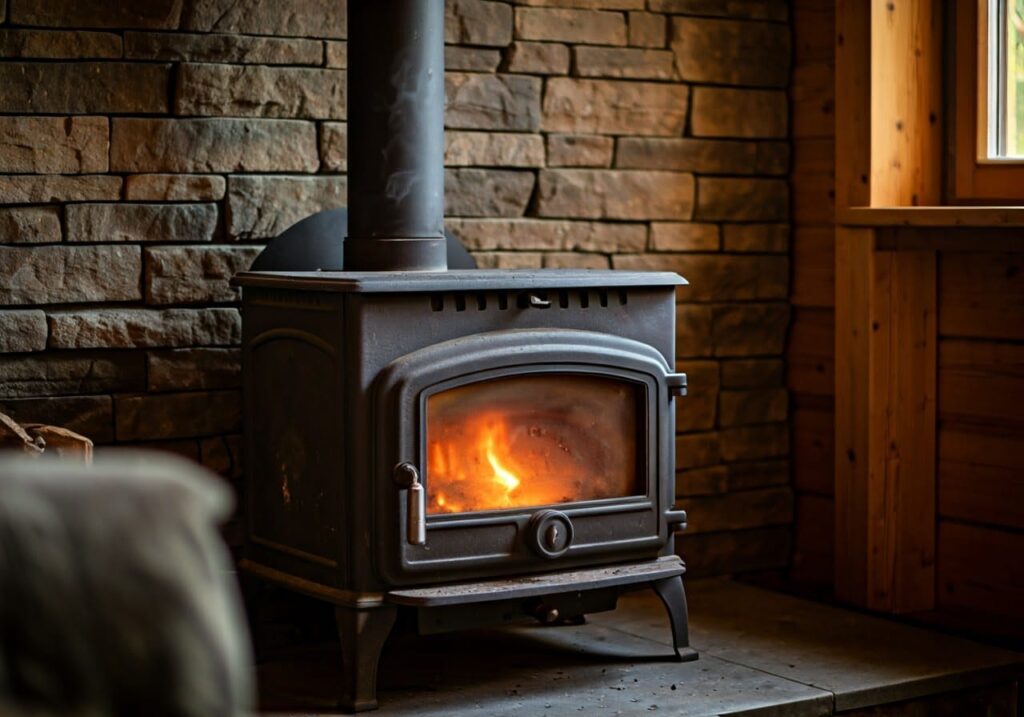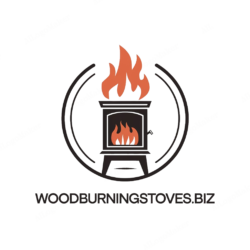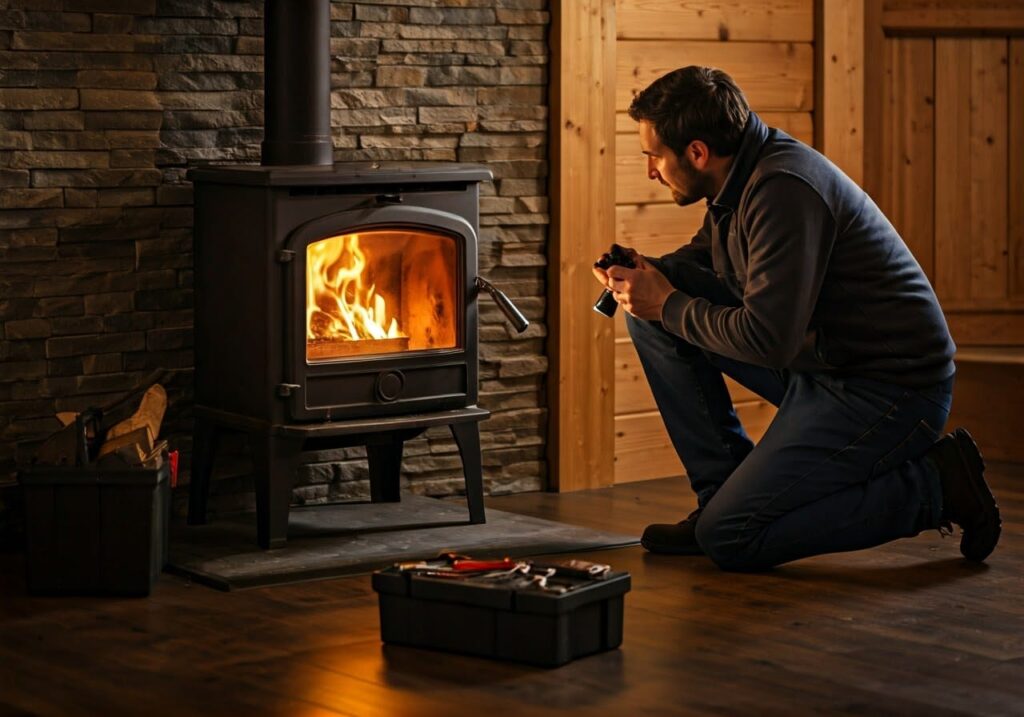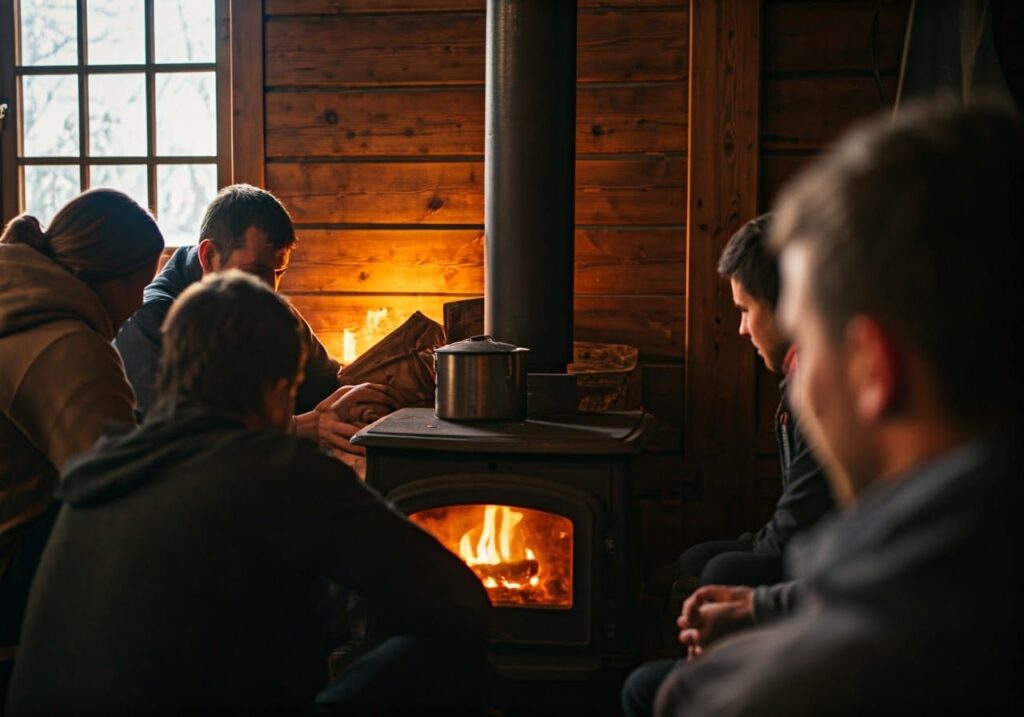
Diagnosing and Solving Draft Issues for Efficient and Safe Burning
A wood stove that’s not drafting properly can lead to a host of problems, including reduced efficiency, increased creosote buildup, and even safety hazards. If you’re struggling with a wood stove that’s not pulling air as it should, this comprehensive guide will help you identify the root cause and provide actionable solutions to get your stove drafting smoothly again.
Understanding Draft in Wood Stoves
Mastering Draft in Wood Burning Stoves for Efficient Combustion
Draft, the upward flow of air into the wood stove and out through the chimney flue, is propelled by the fundamental principle of convection heating. Achieving a proper draft is paramount for:
- Complete Combustion: Ensuring wood fuel burns efficiently, safely, and with minimal creosote buildup, reducing the risk of chimney fires.
- Reduced Emissions: Minimizing particulate matter, carbon monoxide (CO), and other harmful pollutants, contributing to a cleaner burning process and a more eco-friendly heating solution.
- Increased Efficiency: Maximizing heat output and thermal performance, allowing your wood stove to provide reliable warmth while minimizing fuel consumption.
Factors Influencing Draft in Wood Stoves:
- Chimney height and clearance
- Stove installation and maintenance
- Outdoor temperature and atmospheric pressure
- Proper damper adjustment and airflow management
By understanding and optimizing the draft in your wood stove, you’ll enjoy a safer, more efficient, and environmentally responsible heating experience. Regular maintenance and adjustments can help ensure a strong, consistent draft, making the most of your wood burning stove.
Common Causes of Poor Draft in Wood Stoves
1. Insufficient Chimney Height
- Cause: Chimney not tall enough to create sufficient draft.
- Solution:
- Verify Local Building Codes: For minimum chimney height requirements.
- Extend the Chimney: If necessary, to ensure it’s at least 3 feet above nearby structures.
2. Blockages in the Chimney or Flue
- Cause: Debris, creosote, or animal nests obstructing airflow.
- Solution:
- Annual Chimney Inspection: Identify and clear any blockages.
- Clean the Chimney and Flue: Use appropriate tools or hire a professional.
3. Incorrect Stove Installation
- Cause: Improper stove or chimney installation hindering draft.
- Solution:
- Consult a Professional: For a thorough installation assessment.
- Correct Any Installation Issues: Ensure compliance with local building codes.
4. Inadequate Clearance Around the Stove
- Cause: Nearby structures or furniture interfering with airflow.
- Solution:
- Ensure Proper Clearance: Maintain recommended distances around the stove.
- Rearrange Furniture or Structures: If necessary, to improve airflow.
5. Negative Air Pressure in the Home
- Cause: Tight home construction or powerful ventilation systems creating negative pressure.
- Solution:
- Install a Direct Air Kit: To supply the stove with outside air.
- Balance Home Ventilation: Ensure that ventilation systems aren’t creating negative pressure.
Step-by-Step Guide to Improving Draft
- Conduct a Visual Inspection: Check for obvious blockages or installation issues.
- Perform a Draft Test: Using a draft gauge to measure airflow.
- Implement Solutions: Based on the identified cause.
- Monitor and Adjust: Continuously assess draft performance and make adjustments as needed.
Additional Tips for Optimal Draft
- Regular Maintenance: Annual inspections and cleanings are crucial.
- Use Seasoned Wood: To reduce creosote buildup and improve combustion.
- Consider a Draft Inducer: If you live in an area with frequent high winds or drafting challenges.
Expert Insight
“A well-functioning draft is the backbone of a safe and efficient wood stove. Don’t overlook the importance of regular maintenance and proper installation in ensuring your stove drafts properly.”
— Sarah Taylor, Wood Stove Draft Specialist
Troubleshooting Checklist
| Issue | Solution |
|---|---|
| Weak or Intermittent Draft | Check for blockages, ensure proper chimney height, and verify installation. |
| Smoke Entering the Room | Inspect for proper clearance, ensure adequate draft, and check for negative air pressure. |
| Difficulty Lighting the Stove | Verify draft, check wood quality, and ensure proper airflow. |
| Stove Producing Little Heat with Poor Draft | Check for creosote buildup, ensure adequate chimney maintenance, and assess wood burning practices. |
Conclusion
A wood stove not drafting properly can lead to a myriad of issues, but by understanding the common causes and implementing the solutions outlined in this guide, you can restore your stove’s drafting efficiency. Remember, a well-maintained stove with proper draft is key to a warm, safe, and environmentally friendly heating experience.


